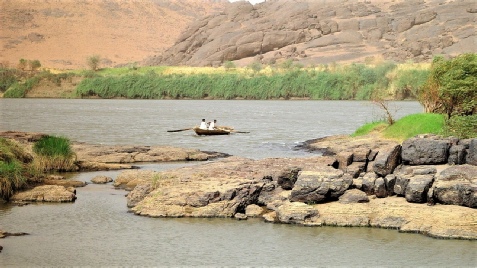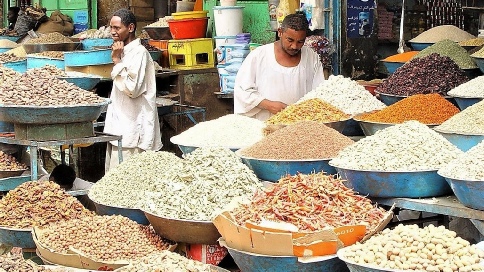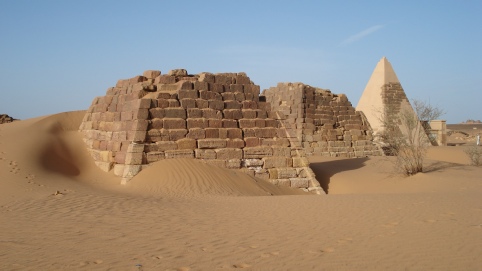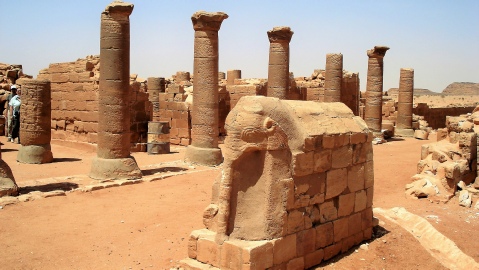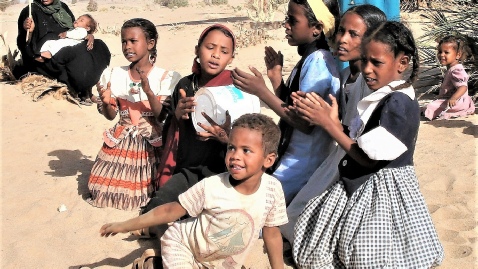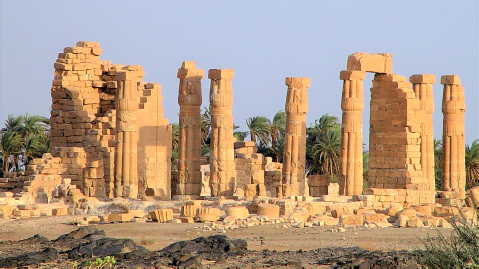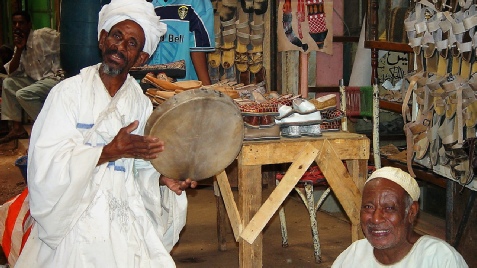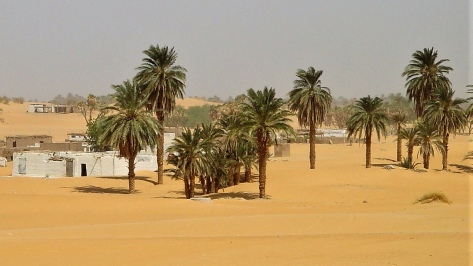

Your partner for Egypt and Nubia
|
Sudan is very rich in it’s history as represented in archaeological remains of northern Sudan. Natural scenes of sea, desert, forests and wild life are main assets of Sudanese social life that draw special interest to the vast variety of its ethnic groups with their distinctive culture and folklore . The southern part of the country offers interesting ethnic diversity and a landscape similar to its southern neighbours, while the eastern area at the border to Ethiopia forms a National Park. Currently, however, we do restrict ourselves to operating in the north of Sudan. Khartoum, at the confluence of Blue and White Nile, is the modern capital of Sudan. Khartoum itself was built at the turn of this century. One of the most exciting please for a tourist to visit in Khartoum is the Sudan’s National museum, the custodian of national historical heritage of Sudan’s ancient civilizations. There is also the Ethnographical Museum, which reflects the cultural life and traditional artifacts of the Sudanese people. The Museum of National History sheds light upon the diverse animal life of Sudan. The visitor might as well see Khartoum botanic garden and enjoy the wonders of natural plantations habitat. It’s twin city Omdurman was the Arab trading center and still has colorful African markets worth visiting, as well as the house of the Khalifa and tomb of el Mahdi. The visit to the city of Omdurman, from the other hand, may acquaint the tourist with traditional Sudanese markets and bazaars. It was made capital of the Mahdists who fought English colonizers at the end of the last century and; hence the Mausoleum of the Mahdi and the Khalifa House Museum are main sites of the city. At Omdurman there is a boat yard where traditional boats are made near to the Nile. West of Omdurman almost 40 minutes drive from its center is camels market. Here, camels brought from Western Sudan are offered for sale or barter. The temple of Sdeinga was built by Amenophis III. and was dedicated to his wife Tiye. Later finds include a Meroitic cemetery. Soleb is famous for the ruins of a large temple to Amun-Ra, also by Amenophis III. In Sesebi lie the remains of a temple to Amun by Pharaoh Amenophis IV. (Echnaton). Sai Island is the oldest ruins on the island date back to the Kerma period. Sai has been continuously settled and was an important trading post during Pharaonic times. Kerma contains ruins dating back to the earliest culture in Nubia. Within the huge mud brick enclosures lie the remains of temples and burial places. Kawa is the site of a temple erected by king Taharqa. Old Dongola was in Christian times it was the capital of the kingdom of Makuria. Most of the area remained Christian until the 15th or 16th century A.D. The fortress of Dongola still overlooks the ruins of an ancient cathedral. Kurru comprises a royal cemetery for the early Napatan kings. The northern plateau houses the tombs of the kings, the southern plateau those of the queens. The most important of these are the tomb of Tanutamani and his mother Kalahata. Nuri is the Royal pyramid cemetery of the Napatan kings. The first and largest pyramid dates back to King Taharqa. The nearby oasis of Ghazali still contains the ruins of a Christian monastery. Jebel Barkal was the capital of the Napatan kingdom. It comprises six temples, among them the large temple of Amun, several palaces and pyramid cemeteries. Meroe has a large Meroitic pyramid cemetery. Musawwarat es Sufra is another Meroitic site near Nagaa, built into a ravine and protected by high walls from all sides. Main features are a Lion Temple and the Great Enclosure. The Meroitic site of Nagaa is famous for the Lion Temple for the god Apedemak, erected by king Natakamani and queen Amanitere, and a kiosk building of the Roman period similar to the kiosk of Philae island (Aswan, Egypt).
Su 2a: Nubia - Kingdom of the Black Pharaohs A 13 days’ expedition through a country not yet discovered by tourism, with marvellous nature, impressive monuments and friendly people! 1. Day: Flight Europe - Khartoum Arrival in Khartoum, meeting and assistance at the airport and transfer to hotel, overnight. (-/-/-) 2. Day: Khartoum After breakfast citytour in Khartoum and visit to the National Museum housing the salvaged temples of Upper Nubia and the frescoes from the cathedral of Faras. Afterwards proceed to the Ethnographical Museum. Lunch in a restaurant by the Nile (optional), afterwards motor boat trip to the confluence of Blue and White Nile (ca. 1 ½ hours). Back to hotel, overnight. (B/-/-) 3. Day: Khartoum – Naga – Musawwarat es Sufra - Meroe Early morning departure with 4x4 northward passing the rapids of the sixth cataract. On to the ancient cultic centre of Nagaa with the meroitic temple of Amun, the Roman chapel and the lion temple, then proceed to Musawarat as-Sufra 20 km, an extensive temple area with rare elephant depictions. Afterwards continue to the small town of Shendi, 80 km, and onwards 30 km to Meroe. Overnight in a simple guesthouse. (B/L/D) 4.Day: Meroe - Damer - Bayouda Desert- Nuri - Karima In the morning Visit the largest pyramid cemetery of the Nile valley – dozens of black pyramids rise from the desert sands. opportunity to take a stroll and photograph the pyramids. Then drive to El Damer 100 km, crossing the Nile to Umm Tuyur on the west bank. Afterwards the route leads through the Bayouda desert, then drive to Nuri, 25 km. Visit the cemetery containing the pyramids of the 26th dynasty, among them that of Pharaoh Taharqa. Afterwards drive to Karima. Overnight in Nubian House. (B/L/D) 5. Day: Karima Gebel Barkal - El Kurru - Karima Ascent to Jebel Barkal and afterwards visit to the great temple of Amun of Napata dating back to the 12th century B.C. The temple was the most important religious centre of Kush. Afterwards crossing the Nile to visit the necropolis of el-Kurru, 18 km. The subterranean tomb of King Tanwetamani is decorated in the classical pharaonic style. Overnight in Nubian House in Karima. (B/L/D) 6. Day: Karima - Kerma Drive to Kerma, capital of Upper Nubia during the 3rd and 2nd millenium B.C. The "Diffufa", large mud brick constructions slightly younger than the Giza pyramids. Overnight in Nubian House in Kerma. (B/L/D) 7. Day: Kerma – Sesebi - Soleb We drive through colorful Nubian villages to Sesebi, a military outpost of pharaoh Akhenaten. Afterwards drive to Soleb. Visit the temple of Soleb, a Nubian copy of the temples of the Egyptian New Kingdom, with pillars reminiscent of Luxor temple. Overnight in Nubian House. (B/L/D) 8. Day: Soleb – Sdeinga – Sai - Soleb Drive through the desert along the old Darb el-Arbain, the "Road of Forty" – a camel took 40 days from Khartoum to Cairo on this road. In Sdeinga we visit the temple dedicated to Queen Teje, the mother of Akhenaten. Afterwards boat trip to the island of Sai, 40 km, with settlement ruins from old Nubian, Pharaonic and Christian times. Afterwards return to Soleb and Overnight in Nubian House. (B/L/D) 9. Day: Soleb – Messaida – Sebu - Tumbus Drive to Tumbus passing prehistoric rock inscriptions near Sebu. Afterwards drive to a nearby hill to visit the ancient church at Messaida. In Tumbus visit to hieroglyphic inscriptions and a recumbent statue of King Taharka in the granite quarries. Overnight in Nubian House. (B/L/D) 10. Day: Tumbus – Old Dongola Drive to Old Dongola, once the Christian capital of the Nubian kingdom Makuria and later a major islamic city. Visit to the fortress and the remains of a cathedral. Overnight in Nubian House. (B/L/D) 11. Day: Old Dongola - Omdurman - Khartoum We drive back through the Bayouda desert. Arrival in Omdurman in the afternoon. Visit to the famous dervish dance on Friday. Afterwards proceed to Khartoum, transfer to hotel. (B/L/-) 12. Day: Khartoum – camel Market - Omdurman - Departure In the morning visit of the largest camel market in the country, then Visit the house of the Khalifa that has been transformed into a museum, the mausoleum of the Mahdi, the bazaar of Omdurman and other popular markets. Late in the evening transfer to airport for departure. (B / - / -) Day 13: Arrival Arrival in Europe. (- / - / -) EGSU 3: Northern Sudan & EgyptIII A 14 day expedition through the archological site along the Nile from Kahrtoum to Luxor. Day1: Flight Europe - Khartoum Arrival in Khartoum, meeting and assistance at the airport and transfer to hotel, overnight. (-) Day 2: Khartoum - Omdurman After breakfast citytour in Khartoum and visit to the National Museum housing the salvaged temples of Upper Nubia and the frescoes from the cathedral of Faras. Afterwards proceed to the Ethnographical Museum. Lunch in a restaurant by the Nile (optional), afterwards drive to Omdurman. Visit the house of the Khalifa that has been transformed into a museum, the mausoleum of the Mahdi, the bazaar of Omdurman and other popular markets. Back to hotel, overnight. (B) Day 3: Khartoum – Naga – Musawwarat es Sufra - Meroe Early morning departure with 4x4 northward passing the rapids of the sixth cataract. On to the ancient cultic centre of Nagaa with the meroitic temple of Amun, the Roman chapel and the lion temple, then proceed to Musawarat as-Sufra 20 km, an extensive temple area with rare elephant depictions. Afterwards continue to the small town of Shendi, 80 km, and onwards 30 km to Meroe. Overnight in a simple guesthouse. (BLD) Day 4: Meroe - Damer - Bayouda Desert- Nuri - Karima In the morning Visit the largest pyramid cemetery of the Nile valley – dozens of black pyramids rise from the desert sands. opportunity to take a stroll and photograph the pyramids. Then drive to El Damer 100 km, crossing the Nile to Umm Tuyur on the west bank. Afterwards the route leads through the Bayouda desert, then drive to Nuri, 25 km. Visit the cemetery containing the pyramids of the 26th dynasty, among them that of Pharaoh Taharqa. Afterwards drive to Karima. Overnight in Nubian House. (BLD) Day 5: Karima Gebel Barkal - El Kurru - Karima Ascent to Jebel Barkal and afterwards visit to the great temple of Amun of Napata dating back to the 12th century B.C. The temple was the most important religious centre of Kush. Afterwards crossing the Nile to visit the necropolis of el-Kurru, 18 km. The subterranean tomb of King Tanwetamani is decorated in the classical pharaonic style. Overnight in Nubian House in Karima. (BLD) Day 6: Karima - Kerma Drive to Kerma, capital of Upper Nubia during the 3rd and 2nd millenium B.C. The "Diffufa", large mud brick constructions slightly younger than the Giza pyramids. Overnight in Nubian House in Kerma. (BLD) Day 7: Kerma – Sesebi - Soleb We drive through colorful Nubian villages to Sesebi, a military outpost of pharaoh Akhenaten. Afterwards drive to Soleb. Visit the temple of Soleb, a Nubian copy of the temples of the Egyptian New Kingdom, with pillars reminiscent of Luxor temple. (BLD) Day 8: Soleb – Wadi Halfa (220 Km) Today we drive through the desert to the north along the old Darb el-Arbain, the "Road of Forty" to Wadi Halfa. Overnight in a very simple hotel. (BLD) Day 9: Wadi Halfa – Ashkit - Qustul - Abu Simbel – Aswan (370 Km) In the morning we leave Wadi Halfa for Ashkit and cross the Border to the Egyptian village Qustul with the usual formalities. We cross then the lake Nasser with the ferry boat (about 1 hour) and we drive on to Abu Simbel, we visit the imposing rock temples of Rameses II and his queen, Nefertari. The Temple of Rameses II is one of the classic images of the power of the Pharaohs. Then drive to Aswan. Overnight. (BD) Day 10: (must be midweek or Friday) Nile cruise: Aswan - Kom Ombo After breakfast, visit to the El Sadd el Ali high dam and the Unfinished Obelisk, as well as the Temple of Isis on Philae Island. Embarkation at noon, lunch on board. Afternoon sailboat cruise around the Nile Islands from Aswan until sunset. Overnight stay on board. (B/L/D) Day 11: Nile cruise: Kom Ombo - Edfu - Luxor In the morning visit of the double temple of Haoeris and the crocodile god Sobek in Kom Ombo, then continuation of the cruise. The ship glides quietly along the Nile; one has the opportunity to observe the fellah population in the villages and in the fields. In Edfu we visit the very well preserved Ptolemaic Temple, dedicated to the falcon god Horus. Continuation by boat to Esna. Overnight on board. (B/L/D) Day 12: Nile cruise: Thebes West In the morning bus ride to Thebes West and visit of the Valley of the Kings, Temple of Hatshepsut, and the Memnon Colossi. Afternoon visit to the extensive temple complexes of Karnak and the Luxor Temple. Overnight on board. (B/L/D) Day 13: Luxor Disembarkation after breakfast. Visit the extensive temple complexes of Karnak and the Luxor Temple. Overnight in hotel. (B/D) Day 14: Departure Transfer to Luxor airport and departure. (B)
|
|
|
|
|
|
|
|
|
|
|
|
|
|
|
|
|
|
|
|
|
|
|
|
|
|
|
|
|
|
|
|
|
|
|
|

